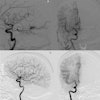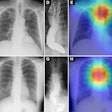Climate change's effects -- particularly higher outdoor heat and air pollution -- increase imaging use in the emergency department, researchers have reported.
A team led by Kate Hanneman, MD, of the University of Toronto in Canada found that heat and air pollution were associated with increased utilization of x-rays and CT, with higher temperatures associated with higher x-ray use and higher pollution levels associated with higher CT use. The study results were published November 19 in Radiology.
"Both environmental exposures were associated with increased utilization of chest, neuro and musculoskeletal imaging," the group wrote.
Research has shown that climate change and its related effects can negatively impact human health, the authors explained, noting that "the impacts of climate change -- such as higher ambient temperatures and more frequent wildfires -- also increase air pollution, including particulate matter and ground-level ozone."
The question of whether climate-related effects are linked to imaging volumes has not been thoroughly investigated, according to Hanneman and colleagues. They explored any associations between short-term exposures to outdoor heat and particulate air pollution with emergency department medical imaging via a study that analyzed 1.7 million emergency department imaging studies performed between 2013 and 2022 at four academic hospitals in Toronto (mean daily exams, 428; mean emergency department visits, 659).
The team tracked factors that may have influenced these exams, including seasonality, time trends, influence by day of the week, and patient age, sex, and race. High heat was defined as greater than 68° F and high air pollution as the presence of fine particulate matter at levels greater than 12 μg/m3. (Mean average daily temperature was 48.2° F -- with a high of 85° F -- and mean daily ambient particulate matter was 7.9 μg/m3.) Over the study time frame, there were 602 high-heat days and 552 high air pollution days.
The investigators found the following:
- Heat and air pollution exposure days were associated with increased use of x-ray and CT but not ultrasound or MRI.
- Short-term (i.e., fewer than 7 days) exposures to higher temperatures and higher levels of air pollution were associated with overall increases in imaging utilization, at 5.1% and 4% respectively.
- High heat and high air pollution exposure days were associated with excess absolute risk of 5.5 and 6.4 imaging studies per one million people at risk per day, respectively.
"While the individual daily effects we observed are modest, the cumulative increase in total imaging volumes is substantial," Hanneman said in an RSNA statement.
The study highlights the "dual role of radiology in climate change," wrote Jan Vosshenrich, MD, of the University Hospital Basel in Switzerland, in an accompanying editorial.
"On the one hand, medical imaging contributes to the carbon footprint of health care, driven by energy-intensive imaging equipment," Vosshenrich noted. "On the other hand, radiology departments are expected to also face climate change-driven surges in imaging demand. This dual challenge poses a unique dilemma for radiology, requiring comprehensive investigations into the effects of environmental conditions on the use of medical imaging to build resilience against the impacts of the climate crisis."
The complete study can be found here.



















